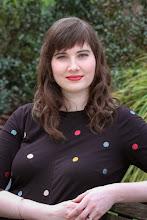About Me

- Rachel E. Watson
- I think, read and write. I might review books, mull on music, spin original poems, share insights or tell stories, but you can be sure whatever you read here comes from a thoughtful and considered place within.
Popular Posts
-
Social Media Blues By Rachel Watson I’ve got a deadline. A project due in less than a week. I open my blan...
-
I colored this drawing recently. For me, music has always been a superhighway of emotion and beauty . It also has been one of my pr...
-
Tonight, I was updating my interests on my Facebook profile, and out of curiosity, tested the automatic link that is under "Current Ci...





